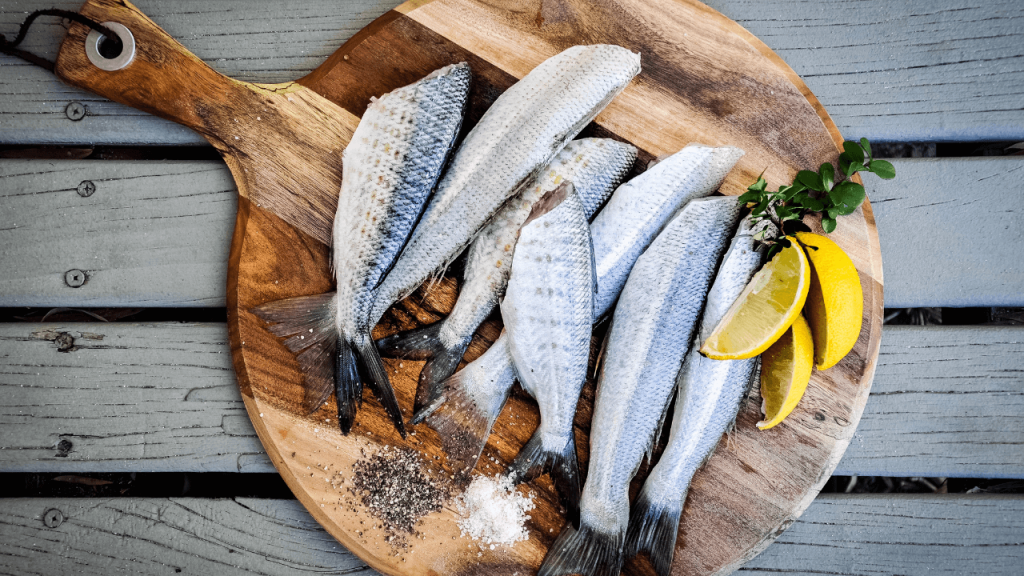South Africa’s maritime connections have long had a powerful influence on its culinary traditions. But to harness the ocean’s omega-rich morsels is another thing altogether.
Although the Karoo was, once upon a time, under the sea, the people of this region are not exactly adapted to the ocean. We prefer endless stretches of rock and dirt over the deep blue and like to eat from what can be grown and harvested on terra firma.
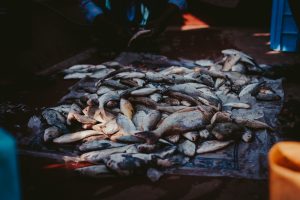
You’d think we’d humbly admit to our lack of sealegs. But nope, Karoo folk are stubborn.
That’s why my dad and his brothers-in-law once bought a boat. It was right before our annual family holiday, and they were adamant. Harregat! ‘The money spent on the boat will soon be repaid by all the fish we’ll catch and eat,’ claimed my dad. To him, owning your own boat meant an end to takeaway fish and chips. All the fish at our table would, henceforth, be caught by a family member from the family boat.
We, kids, were disgruntled; all the wives, were unimpressed.
And rightly so. On the very first day, the hopeful seamen were to set sail, Uncle Willem threw the boat keys to my dad on the harbour jetty. He tried catching with one hand, and he missed. Everyone watched in disbelief as the two small keys on the small round keyring spiralled downwards into the deep blue, and out of sight.
It took close to five hours of diving by all members of the family for my brother to finally emerge victoriously – keys in hand. By then, everyone was sitting in camping chairs on the deck, drinking beer with their limp fishing lines dangling in the harbour waters.
The boat was sold soon after, and I recall zero homemade fish and chip meals. Only Karoo lamb chops on the braai. Stick to what you know, you know.
South Africa has one of the most abundant marine landscapes in the world, with a 2 500km coastline stretching all the way from the kreef and snoek dominated seas in the west to the tropical oceans of the east.
Along that coastline, there are numerous generational fishing communities skilled at harnessing its bounty. In a perfect world, we’d be sourcing the fish in our fish and chips directly from them, but that’s not always the case.
And the richness of our sea harvests is in jeopardy as a result.
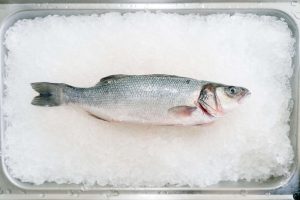
In the early 1900s, Renaissance man and South African food analyst and gourmand C Louis Leipoldt noted that fish stocks in our seas were suffering. ‘There was a time when the Cape Town fish market was the repository of practically all fish in season,’ he wrote in his Cape Cookery manuscript. ‘From a little sandy cove at the bottom of Adderley Street, when the fishing boats came in, one could get even a bunch of mullets for the asking, so plentiful was the catch. Today, we have changed all that and fish – that can and should be among the cheapest [and most readily sourced] foodstuffs – is prodigiously dear, hardly fresh, and never in sufficient supply to meet the demand.’
More recently, overfishing by massive foreign trawlers paired with local poaching has escalated Leipoldt’s concern to a crisis. And because the issue hasn’t been policed for decades, the South African coastline has become particularly vulnerable to exploiters.
Consumers often unknowingly support commercial looters by unwittingly buying into the system. After all, one fish looks much like any other once it’s on the plate. How’s a farmer from the Karoo to know that the fish being served for dinner is what the chef says it is?
Luckily, there are sustainability experts working to save our oceans’ ecosystems and protect local fishing communities in the process.
One such organisation is Abalobi, connecting the catch of the day directly with end consumers thanks to an app available to anyone with a smartphone. ‘It started as an academic research effort to help inform how fishing quotas are determined,’ says Iain Campbell, Abalobi’s head of marketplace. ‘A natural next step was to connect fishing communities directly with buyers with the tech we were already implementing.’
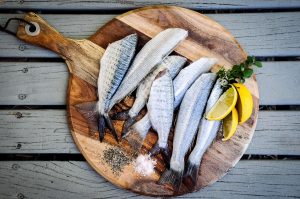
Since 2015, the initiative has cast a much-needed spotlight on exactly how ocean-caught fish reaches tables. Moreover, it has placed power back in the hands of the hardworking fishers out at sea. ‘Previously, without knowing the market’s demands, the fisherman didn’t know the price he was going to get once ashore,’ Iain says. ‘He just had to accept the prices offered at the harbour. Small-scale fishers weren’t paid a fair price regardless of their bounty, so they would go out more often, catch more fish, hunt for the more expensive and well-known species and waste catch that was deemed undesirable.’
By linking the fishers’ activity directly with consumers via the app, there is a wider basket of seafood: cheap and delicious options many didn’t even know existed. ‘Cape bream, for example, is abundant in our Cape waters but was disregarded by fishermen because they didn’t know there was a market for it,’ Iain explains. ‘Now, the fisher price received for humble Cape bream has grown by more than 300% on the Abalobi Marketplace. High-end eateries are proudly adding it to their menus and fishermen are paid fair prices for a highly attainable, locally wild-caught species. Traceability is key here; every order comes with a QR code so consumers can read the whole story behind the fish on their plate – who caught it, when and where.’ Win-win.
Inland, too, South Africa’s many rivers and lakes brim with freshwater delights such as trout and tilapia. In Dullstroom in the Mpumalanga Highlands, sustainable trout and flyfishing farms supply a homegrown bounty of omega-rich fish to South Africans at a fraction of the price of imported trout and salmon, not to mention the bigger socio-economic impact and smaller carbon footprint.
Considering the war at one end of the world and food insecurity already a war within our midst, we cannot afford to rely on cheap food imports.
We need to take care of the people who feed us, and the resources they rely on. Only once you’ve sourced your fish responsibly, can you eat it.
Read more: How to avoid consuming too much mercury
Traceability at your fingertips
Traceability adds to the enjoyment of a meal… like scanning a barcode in the fancy Bistro Sixteen82 at Steenberg in Tokai, Cape Town and learning that the Cape bream on your plate was wild-caught in Lambert’s Bay the day before. Abalobi, which means “fishermen” in isiXhosa, empowers both consumers and fishermen. Kerry Kilpin, executive chef at Sixteen82 and at Tryn, Steenberg’s other restaurant, has been involved with Abalobi from its inception and is passionate about its use as a means of helping to safeguard the abundance in our waters while ensuring that fishers and diners are kept in the loop.
The Abalobi platform has recently been opened to home cooks as well. ‘We started off in the hospitality and restaurant industries but during Covid, were forced to create an offset for fishermen who still needed an outlet,’ says Abalobi’s Iain Campbell. Cue the home buyers and a new range of convenience and deli products. The range includes cleaned, filleted and blast-frozen fish. Great for sticking in the air fryer at home, even better for fishermen and their families in the offseason. Visit abalobi.org
The other biltong
While the West Coast’s dried fish delicacy, bokkoms, is familiar to many South Africans, dry-aged fish is relatively new to the local market. ‘Dry-ageing removes moisture from the fish but it still remains incredibly juicy and tender, with a mouth-watering flavour,’ says Kurt Hill, one-half of Cape Fish, the first company to offer the product in South Africa.
‘You can’t compare it to fresh fish, and certainly not to bokkoms,’ he says.
Kurt says that when moisture is removed, there’s a flavour intensification that happens because the fats ‘develop’ while the ‘bad’ proteins break down. The resulting cuts of fish are cleaner, he says, and sans fishy smells. ‘So clean, it makes excellent sashimi and nigiri.’
Dry-ageing can include smoking and curing, but is generally an unformulaic process, with the time taken to process any piece of fish lasting anywhere between a few days and several weeks. Dry-ageing prolongs the fish’s prime period of usefulness and has the great advantage of ensuring that every part of the fish is used.
Once dry-aged, the fish can be used just the way fresh fish is used, but the advantage is that reduced moisture ensures it cooks more evenly; it also crisps really well.
Kurt and business partner Kyle Nold started Cape Fish in April 2012 when they had one tuna boat and an old bakkie that they used for late-night and early-morning deliveries. Their focus is on sustainably caught and sourced seafood, and they specialise in large pelagics such as yellowfin tuna.
They process their fish at their premises in Paarden Eiland and supply dry-aged fish to such restaurants as Salsify at the Roundhouse, The Pot Luck Club, Obi and Orca Café. They also have an over-the-counter butcher range that includes swordfish bacon, marlin carpaccio and salmon sausages.
Their focus is on sustainable fish species, and they have a fervent no-wastage policy, with offcuts used in their fishcake mixture, bones and skin used for fish meal and fish heads used for bait. Visit capefish.co.za
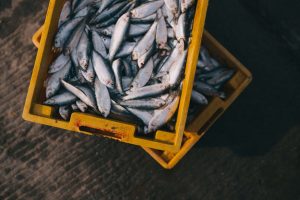
Finding the freshest catch
Right on the edge of Kalk Bay harbour, where boatloads of the freshest ocean bounty are delivered, Kalky’s main attraction is its location, a guarantee of freshness. There’s really no guessing where that snoek came from that you are eating with your slap chips – drenched in salt and diluted brown vinegar, of course.
Kalky’s bright blue tables are often packed with families taking advantage of the authentic atmosphere and bargain prices: crayfish and chips for only R100; freshly caught yellowtail and chips for only R150.
Take cash in case the dodgy card machine packs up again, and know that a long wait in the queue is a sign of good things to come. 021 788 1726, facebook.com/kalkys.seafood
At Gypsy Shawarmas and Fish in Gqeberha’s Richmond Hill, first-time restaurant owners Geoffrey and Thandanani Chipeta have been serving fish and chips since the middle of the 2020 lockdown. The duo took the no seating policy in their stride and focused solely on kerb collections.
‘We were lucky because we were well set up for takeaways right from the start, and had really good support as soon as the restrictions were lifted to allow takeaways,’ says Geoffrey.
The place has since become the go-to for the tastiest fried fish and chips in the Bay, and the whole fried hake will make even the most patriotic British pub-eater weepy. Not to mention the fresh, flash-grilled squid with a lemon butter drizzle – available only during chokka season in spring. 073 353 3653, Facebook: Gypsy Shawarmas and Fish
On the Wild Coast, Kei Mouth’s stalwart Morgan Bay Hotel has fed many a famished surfer and traveller in its 76 years. Here, hovering over the warm Indian Ocean, The Deck Restaurant and Bar (043 841 1062, morganbayhotel.co.za) is an unpretentious spot to enjoy good seafood and the unspoilt surroundings, ice-cold beer in hand.
Better still, if you have the time, would be to cast your line into the ocean and haul out your own dinner. Indian Ocean favourites include kob, garrick, white steenbras and an array of equally delicious, smaller fish.
If you’re in the area, get in touch with Great Kei Adventures about its guided fishing excursions. It can hook you up to fish from the beach, or offer kayaks to explore the local estuaries. The guides are all local, knowledgeable and experienced and their equipment is top-notch. 082 825 0624, greatkeiadventures.com
Paternoster’s faded white-washed buildings and unpretentious coastal atmosphere belie one of the best food scenes in the country. You can literally walk into any restaurant in this seaside town and find fabulous food that’s been sourced from within a 50km radius – from the sea and the land. Chef Kobus van der Merwe’s foraged fine-dining restaurant Wolfgat (wolfgat.co.za)was named the best restaurant in the world in 2019 (which is more or less when you needed to make a booking for 2022).
But there’s also Gaaitjie (022 752 2242, gaaitjie.co.za), where you’ll be lucky to find a table, and Leeto (060 927 0403), in the Strandloper Ocean Boutique Hotel, all serving the freshest, seasonal seafood sourced from the ocean right in front of you. On St Augustine Road, The Noisy Oyster (022 752 2196, facebook.com/noisyoysterpaternoster) is a particular favourite, too, with its colourful shade cloths.
First-timers usually don’t expect the extravagant dishes put down in front of them. Try the prawn curry and share a few snoek samosas for starters. You also can’t go wrong with a bowl of West Coast mussels with toasted garlic bread and a glass of Kaapse Vonkel. Book in advance.
Inland ain’t bad
As a rule of thumb, you shouldn’t buy seafood anywhere you can’t see or smell the ocean. There are exceptions, however, such as Uncle Michael Jacobs’ Woelige Snoek (on Jan van Riebeeck Drive between Paarl and Wellington). While the ocean isn’t in sight or mind on a busy main road in Paarl, Michael and his wife Sharon’s stall takes you right there, from the heart of the Boland.
Only the freshest West Coast snoek make it to the table every morning, sourced from a trusted friend in Lambert’s Bay. Sharon will clean, gut and vlek the snoek for you on-site – R110 each for a small catch, or R120 for a big one.
It’s the best bounty you can pick up on your drive home from work, to cook over the coals during loadshedding and serve with a couple of fire-roasted sweet potatoes.
‘The snoek is available from May every year, until after the winter,’ says Sharon. ‘Last year, the season lasted very long. We had fresh snoek even into December. Hopefully, this year will be the same.’ 072 107 8672
Also untethered from the sea, Dullstroom in Mpumalanga is closer to the bustling cities of Gauteng than it is to any marine port. Instead, it offers something for adventurers and foodies in the form of trout. There’s nothing like launching your line into one of the town’s many lakes and feeling it jolt back… even if it is after three days of futile attempts and seeing live trout literally jumping out from the water right in front of you.
Experts call fly fishing the true test of endurance, but if you’re determined to have your trout and eat it quickly, there are ways… Milly’s Country Trout Stall (013 254 0310) stocks a stellar selection of locally and sustainably farmed trout and trout products – sourced from the nearby trout farms at Machadodorp.
Milly’s has it all – from whole fish to smoked slivers and all the pâtés you can imagine. The trout roulade is a must. 013 256 0718, millys.co.za
And in Johannesburg, the freshest of fish is available at Fisherman’s Deli. It’s a bustling spot that smacks of the ocean in the upmarket suburb of Dunkeld West. The sushi chef whips up incredibly tasty morsels you can eat there, but most folks buy their fish to take home. It stocks a variety of fresh fish, oysters and sometimes fresh calamari and mussels. Locals swear by it. 011 325 2577, fishermansdeli.co.za
ALSO SEE: What to look out for when shopping for fish
By Louzel Lombard Steyn
A version of this article appeared in the September 2022 print issue of Getaway

